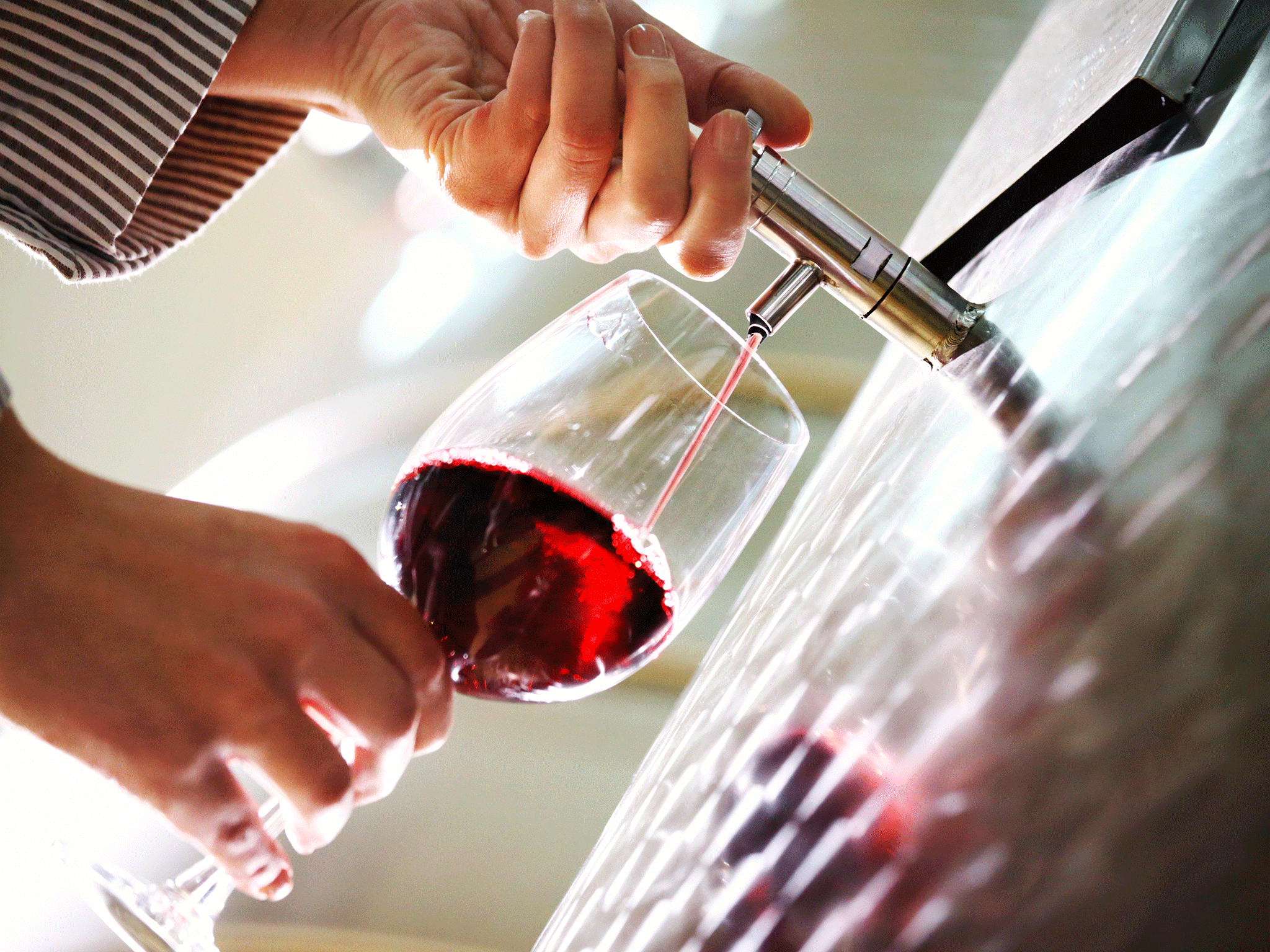How wine on tap could change how we drink
Draught wine is gaining popularity thanks to millennials

Your support helps us to tell the story
From reproductive rights to climate change to Big Tech, The Independent is on the ground when the story is developing. Whether it's investigating the financials of Elon Musk's pro-Trump PAC or producing our latest documentary, 'The A Word', which shines a light on the American women fighting for reproductive rights, we know how important it is to parse out the facts from the messaging.
At such a critical moment in US history, we need reporters on the ground. Your donation allows us to keep sending journalists to speak to both sides of the story.
The Independent is trusted by Americans across the entire political spectrum. And unlike many other quality news outlets, we choose not to lock Americans out of our reporting and analysis with paywalls. We believe quality journalism should be available to everyone, paid for by those who can afford it.
Your support makes all the difference.Traditionalists who eye screwtop bottles suspiciously better brace themselves, because wine on tap is set to change the way we drink.
Admittedly, pulling a lever on a 20 litre keg of plonk will never match the theatrics of swirling the foil off a bottle, stabbing the corkscrew into the top and yanking open a Merlot with a satisfying pop as the intense scent of fermented grapes rises from the neck.
But experts agree that the rising popularity of wine taps – or draught wine – in bars and restaurants is ushering in a more ecofriendly era for the drink. Kegs and barrels also help to preserve it, and make high quality wine more accessible. They could even help boost an industry that is notoriously reluctant to modernise.
While draught wine seems like an innovation, it was in fact pioneered in the old world nation of Italy, later gaining traction in the new world regions of the US, Australia and New Zealand, explains Sarah Clark, managing director at Wright & Bell and Mitchel Adams, and operations director of London’s Borough Wines store.
But despite its old-world origins – usually a winning sign for wine snobs – a stigma is still attached to serving wine by tap, according to Martin Williams, founder of M Restaurants, which was among the first upmarket eateries in the UK to roll out wine on tap.
Yet, likely to the delight of wine producers, it’s the older generation that raise their eyebrows at draught wine. Millennials are less fussed by the vessel their wine is kept in, as long as it’s good value for money, high quality and has a unique backstory.
Similarly to canned wine, vino on tap ticks all the boxes for success with millennials: it is seemingly innovative, and environmentally friendly as it eradicates the need for bottles and boxes. And without being hampered by wine bottles, wine taps help waiting staff speed up service. According to research by trends forecaster Mintel, the number of outlets selling wine from the tap in the US spiked by over 70 per cent in 2015, in a trend now making waves in the UK.
Love Wine on Tap, which sells draught wine to restaurants and bars, has over 400 customers in the UK with between one and eight taps. They predict this will climb to 1,000 in the next two years. Restaurants, including burger bar Meat Liquor and Pizza Pilgrims, already use them.
Wine experts Tom Harrow of Honest Grapes and Radka Beach, who runs La Muse Blue blog, have both noticed that wine taps are gaining traction.
“I suspect that with the rising popularity of craft beer, the wine industry decided to approach the millennials in a more low key way, so they serve house wines and wines from producers delivering wine kegs,” suggests Beach.
“It is growing and is generally a good thing. It saves on packaging and therefore is cheaper and greener,” comments Harrow, who predicts it will soon be mainstream outside of trend-setting bars and restaurants in big cities.
But won’t wine taps make it easier for outlets to fob customers off with cheap plonk? On the contrary: wine in a keg is not exposed to light and air, so it is easier to preserve, meaning that higher-end wine can be added to menus without outlets fearing it will go to waste.
“The tasting element of wine on tap should be part of the serve, just like craft beer, so tasting a wine before buying should be made even easier and less intimidating,” argues Clark. “The economies of serving tap wine mean we are able to serve wines at house wine prices, that would usually be far more expensive on a wine list by the bottle.”
Charlie Young of Vinoteca wine bars in London started serving wine on tap two and a half years ago. He highlights that as long as wineries have the correct equipment, wine can be served on tap. “Our latest keg wine is a single vineyard old vine grenache from the Rhone Valley in France,” he says.
“It has £15 equivalent wine shop retail price, which makes it fairly premium. The wine has only ever been produced in bottle before, but we have a good relationship with the broad-minded winemaker and when we said we wanted him to ‘keg’ 1,600 litres for us, he was happy to do so. The wine is stunning – a bit like a Chateauneuf du Pape, but with more life and energy.”
It seems that for wine lovers and outlets alike, wine taps are a cause to crack open a bottle – or rather, lift a lever.
Join our commenting forum
Join thought-provoking conversations, follow other Independent readers and see their replies
Comments